Lotussound
Sound installation for sixty loudspeakers in seven gardens of Lotusland. 2010
March 17 – 20 2010, Lotusland, Santa Barbara, California
Supported by Ganna Walska Lotusland Foundation, Villa Aurora and Goethe Institute Los Angeles
http://www.lotusland.org
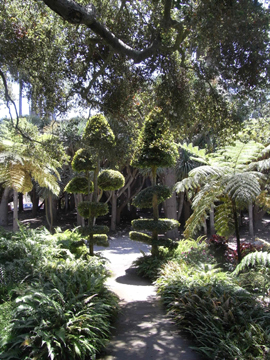
The spectacular gardens of Lotusland in Santa Barbara, California were created between 1941 und 1984 by the excentric ex-opera singer Ganna Walska. For Lotussound, over sixty small loudspeakers are installed in seven gardens - Aloe Garden, Blue Garden, Japanese Garden, Parterre, Theatre Garden, Dracaena Circle - throughout the estate. The sounds are derived from recordings made at Lotusland, many are electronically processed. They connect with the character of the plants and the stilised beauty and dramatic lay-out of the gardens. They blend with the enviromental soundscape and atmosphere of the scenery. The spatialisation of the electronic sounds through the many loudspeakers and their free dissemination in open space account for a unique sonic experience.
A visit to Lotusland conveys the feeling that here nature is presented and composed like an artwork. Walking through the gardens, the impression is that their sucession follows an overall dramaturgy. While in other gardens a pittoresque character is often dominant, an austere beauty prevails at Lotusland that has to do with the exotic and sometimes even harsh character of the plants, like cacti, cycads, euphorbias and aloe. Plants are displayed like sculptures and are grouped together in masses of specimens. This form of sequencing has a lot to do with an aesthetic approach that many contemporary artists like to pursue, namely focussing on taxonomy and on difference in similarity. Another point of departure for Lotussound is the history of Lotusland and ist creator Ganna Walska. The overall theme is the encounter of nature and art.
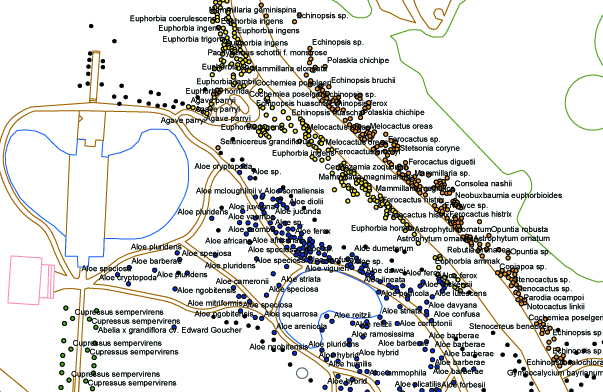
The sounds of the installation are derived from „field recordings“ made in the gardens and from recordings of objects found on the Lotusland estate. Many sounds were electronically processed, These electronically transformed natural sounds distance themselves from the real aural envoriment. At the same time, sounds that come across as artificial in an enclosed room suddenly come alive when heard in open space. The electronically processed sounds seem to obtain an individual voice in a natural enviroment. Their articiality is subject to elements of nature – wind, enviromental sounds and the particular acoustics in an open space – and correspond to them.
The sounds and compositional structures of the seven Lotussound installations relate to the specific character of the different gardens. Each garden or garden area has a discinct spatial set-up of loudspeakers and audio channels.
In the Parterre the focus lies on sounds of purling water based on recordings of the various water features at Lotusland.
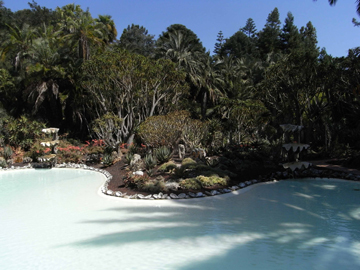
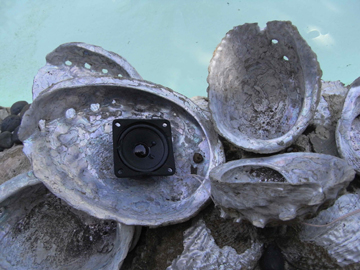
In the Aloe Garden the loudspeakers are positioned in the Abalone shells lining the pool. Ganna Walska had asked fot the pool to be moulded after a porcelain cup. Recordings of old glass vases and lamps in the main building were electronically modified. The sounds have a transparent and bell-like quality and morph into grissling sounds reminiscent of sounds little water creatures might make.
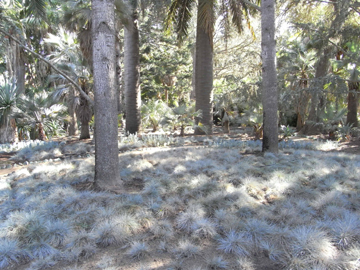
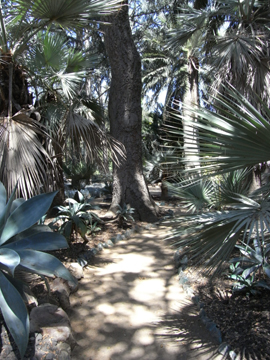
In the Blue Garden, pure electronic sounds and chords sway and creep along the ground, which is covered where the plants with blueish foliage. Recordings of birds plopping seeds onto palms were also used.
In the Dracaena Circle the loudspeakers are placed in the trees, the association „dragon“ called for the use of more harsch, metallic sounds.
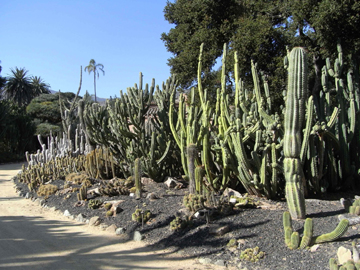
Loudspeakers are placed amidst the cacti along the Main Drive. They play whispers of botanical and common names of the cacti species planted there and natural as well as electronically transformed recordings of plucked cacti.
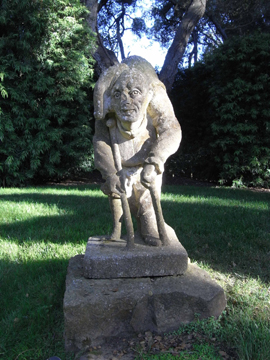
The Theatre Garden features musical material – piano arpeggios, chords and cadenzas taken from the fifteen Lieder sung at a recital evening that Ganna Walska gave 1934 in Carnegie Hall. The loudspeakers are allocated to six grotesques on the garden stage.
In the Japanese Garden the loudspeakers are placed in the stone laterns along the paths. The sound material consists of fragments of the opera „Madame Butterfly“ and recordings of striking the metall chimes of an electric carillon. Walska used this unusual instrument for garden parties on the main lawn in the 1970ies, today it is stored in a container on the Lotusland estate.
Lotussound is dedicated to Beatrix Borchard on the occasion of her 60th birthday.